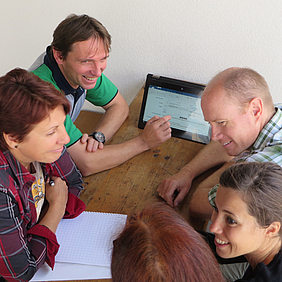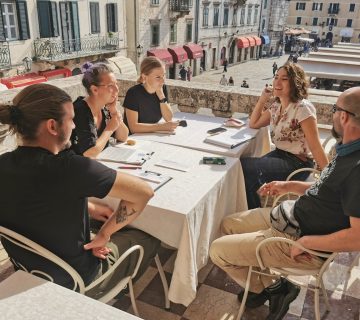The first course for Certified Interpretive Guide Trainers was, according to participants, unforgettable, fun, but most of all, empowering. Now comes the responsibility to do it right.
A Certified Interpretive Guide Trainer (CIGT) is a person who not only teaches tourist guides heritage interpretation skills, but is also a promoter of heritage interpretation in their own country. As this profession is not well acknowledged yet, especially in Eastern European countries, we have to make the profession of interpretation understandable and meaningful to institutions and individuals who have the power and capacity to support our work. We have to interpret interpretation itself. Our task is now to spread the good word and to help the profession of heritage interpretation to become appreciated.
Another responsibility comes with the knowledge of how to work with universal concepts and values. A good interpreter has to understand and be aware of them as they are turning this world around. Values and universal concepts also motivate our visitors to come to heritage sites. And yet, because it’s not possible not to communicate, our messages have to be well thought through and structured. There have been other revelations and insights about the profession of heritage interpretation too.
Personally, I’ve attended many courses in my life but this course was the best ever. The first-hand experience in the natural and cultural environment was the key idea of the courses, both for the guides (CIG) and for the guide trainers (CIGT). The courses were run simultaneously for that reason. It is practical experience, peer coaching, peer- and self-evaluation that made both effective. We worked hard. The schedule was packed from the morning to the late evening but despite this we had fun and time flew by quickly. Some theory was studied but only that which was considered necessary for us to understand what we do in practice. Every day we had to step out of our comfort zones and test our skills many times. CIGT participants attended additional evening sessions and stayed for two more days for a deeper dive into the training skills and theory of heritage interpretation.
There were participants from different countries from all over Europe. At the moment of writing this article we are not guides/trainers yet. Both of our trainers, Thorsten Ludwig and Valya Stergioti, made sure that we will seriously deserve the titles. After the training we have to pull our sleeves up again and complete the assignments, successfully.
Looking back, I have to admit that the whole process of the course empowered us for the real work. It is no wonder, as the courses have been in development for 13 years. Through many projects and many versions of the course, the methods and the content were tested, implemented and tested again. Many experts participated in this development. So the CIG and CIGT courses are guaranteed to be of excellent quality.
The courses took place in August 2016 in Kaprálův mlýn (Brno, Czech Republic) and were organised by Interpret Europe and SIMID (Czech Association for Heritage Interpretation). Thanks to the latter for the very good logistics. Thanks to both trainers, Thorsten Ludwig and Valya Stergioti, as well as to their assistants, Steven Richards-Price and Sandy Colvine. And thanks to the Swiss government for financially supporting our attendance.
Helena Vičič is a historian and tourist guide in Slovenia. She has been working in tourism and in projects for rural development. At the moment she is a freelancer and student of heritage interpretation at the University of the Highlands and Islands (UHI) in Scotland. Contact her at helena.vicic@gmail.com.
To cite this article:
Vičič, H. (2016) ‘Guide trainers will spread the word’. In Interpret Europe Newsletter 3-2016, 6
Available online:
https://www.interpret-europe.net/fileadmin/Documents/publications/Newsletters/ie-newsletter_2016-3_autumn.pdf




